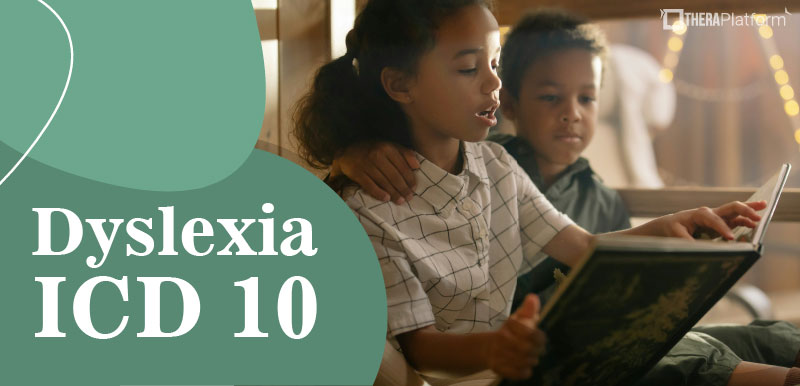Tongue Tie ICD 10

Tongue tie ICD 10 is used to note a congenital condition that is also known as Ankyloglossia. The condition is characterized by a short, tight frenulum beneath the tongue, which restricts its movement. Approximately 8% of infants are born with ankyloglossia.
The condition is considered an Orofacial Myofunctional Disorder (OMD), and can impact an individual’s speech, feeding, and oral hygiene. Speech-language pathologists play a critical role in the assessment and management of ankyloglossia, helping affected individuals improve functional skills and overall quality of life.
The Tongue Tie ICD 10 code is Q38.1. This code, outlined by the International Classification of Diseases, 10th Edition (ICD-10) should be used by SLPs’ documentation of the disorder. Accurate coding of ankyloglossia is essential for accurate diagnosis, treatment planning, and reimbursement.
Properly coding Tongue Tie ICD 10 code Q38.1 facilitates effective communication among healthcare professionals. It can also help ensure that therapy services are appropriately reimbursed through insurance.
Here, we’ll explore the diagnosis of ankyloglossia. Let’s take a look at the defining characteristics of ankyloglossia, diagnosis and assessment, proper use of the tongue tie icd 10 code, speech therapy interventions, and more.
→ Click here to enroll in our free on-demand Insurance Billing for Therapists video course [Enroll Now]
Definition and characteristics of Ankyloglossia
Ankyloglossia, also known as tethered oral tissue(s) (TOTs) or tongue-tie, is a congenital condition that refers to a restrictive lingual frenulum (the tissue running vertically from the floor of the mouth to the undersurface of the tongue) that results in impaired tongue movement.
Characteristics of ankyloglossia include:
- Reduced mobility of the tongue (trouble elevating tongue to the roof of the mouth or protruding it)
- Shortened or thickened lingual frenulum
Symptoms that may be attributed to ankyloglossia are:
- Difficulty latching while breastfeeding
- Oral hygiene issues (due to difficulty licking lips or sweeping food debris inside the mouth, such as on the teeth)
- Speech/articulation difficulties
- Sleep-disordered breathing symptoms
- Dental Malocclusion or dental crowding
Diagnosis and assessment of Ankyloglossia
Speech pathologists play an important role in the diagnosis of ankyloglossia through an interdisciplinary team. This team may also include a pediatric dentist and otolaryngologist (ENT).
The SLP should complete a comprehensive assessment that includes a thorough assessment of an individual’s oral motor structure and function, sound production skills, and feeding abilities.
An assessment tool such as the Hazelbaker Assessment Tool for Lingual Frenulum Function (HATLFF) can be used to provide an objective rating of an individual’s tongue mobility and function.
According to the American Speech Language and Hearing Association (ASHA), SLPs may be asked to provide input on the functional implications caused by a tongue tie, or help support medical necessity for surgery.

Tongue tie ICD 10 coding
Within the ICD-10 system, the tongue tie ICD 10 code falls under the category of “Congenital malformations, deformations, and chromosomal abnormalities” (Q38.0).
Health professionals should use the tongue tie ICD-10 code Q38.1. Using this code appropriately helps to specify that the condition is congenital. It also conveys information that is critical for insurance billing and reimbursement.
Speech therapy interventions
Speech therapy intervention for ankyloglossia may target:
- Improvement of oral motor function
- Feeding skills
- Tongue mobility exercises
- Improved articulation of certain speech sound errors associated with tongue-tie.
SLPs can incorporate oral motor exercises such as those focusing on tongue mobility.
Collaboration with other professionals
Collaboration with other healthcare professionals is essential in the comprehensive management of tongue tie.
The interdisciplinary team may include the following professionals:
- Speech-language pathologist
- ENT (Ear, Nose, and Throat Specialist)
- Pediatric dentist
- Periodontist
- Oral surgeon
- Pediatrician
Consistent communication within this team ensures a holistic approach to the assessment and management of ankyloglossia.
Pre- and post-operative speech therapy
Ankyloglossia may be treated with surgical intervention through a procedure known as a lingual frenectomy. The surgery may be done by a qualified practitioner such as a dentist, periodontist, oral surgeon, or Ear, Nose, and Throat (ENT) Specialist.
Pre- and post-operative speech therapy may be recommended for individuals with ankyloglossia undergoing frenotomy to release the restrictive frenulum.
Techniques such as speech exercises, oral cavity morphology awareness, and myofunctional therapy (MFT) may be included in speech therapy both preoperatively and postoperatively.
According to research, Myofunctional Therapy, which involves stretching exercises, and extrabuccal and intrabuccal massages, can improve outcomes. In some cases when MFT is used, surgical intervention may not be needed.
Start My Free Trial
Counseling and education
SLPs should provide counseling to individuals and families affected by ankyloglossia. This includes providing information about the condition, discussing treatment options and prognosis, and making referrals to other healthcare professionals.
Speech pathologists also play a critical role in educating individuals, families, and other healthcare professionals. Information about oral hygiene practices, speech therapy exercises, and feeding techniques provides continuity of care and can improve management of ankyloglossia.
Challenges in treating Ankyloglossia
Certain challenges can arise when treating a client with ankyloglossia. Some clients may make minimal improvements in speech therapy without surgical intervention. Additional comorbidities and complications from surgery (though rare) can occur.
Ongoing collaboration among a multidisciplinary team of professionals can help SLPs address possible challenges when targeting feeding difficulties and speech sound disorders in therapy.
Ankyloglossia is a congenital condition that refers to a restrictive lingual frenulum that results in impaired tongue movement. For accurate communication among healthcare professionals and to help ensure reimbursement of services, the tongue tie ICD 10 code Q38.1 should be used when documenting.
Speech therapists play a critical role in addressing ankyloglossia. By employing a comprehensive and individualized approach in the assessment and treatment of ankyloglossia, SLPs can effectively help individuals develop functional feeding and speech production skills.
Resources
Speech therapists working with individuals with myofunctional disorders and in need of tongue tie ICD 10 codes along with other codes can utilize TheraPlatform, an all-in-one EHR, practice management and teletherapy solution for helpful resources. Consider starting with a free trial of TheraPlatform today.
They support different industries as well as different sizes of practices including group practices and solo practices.
References
Cordray, H., Mahendran, G. N., Tey, C.S. (2023). The Impact of Ankyloglossia Beyond Breastfeeding: A Scoping Review of Potential Symptoms. American Journal of Speech-Language Pathology, 32(6). 3048-3063. DOI: https://doi.org/10.1044/2023_AJSLP-23-00169
González Garrido MDP, Garcia-Munoz C, Rodríguez-Huguet M, Martin-Vega FJ, Gonzalez-Medina G, Vinolo-Gil MJ. Effectiveness of Myofunctional Therapy in Ankyloglossia: A Systematic Review. Int J Environ Res Public Health. 2022 Sep 28;19(19):12347. DOI: 10.3390/ijerph191912347
Shekher R, Lin L, Zhang R, Hoppe IC, Taylor JA, Bartlett SP, Swanson JW. How to Treat a Tongue-tie: An Evidence-based Algorithm of Care. Plast Reconstr Surg Glob Open. 2021 Jan 25;9(1):e3336. DOI: 10.1097/GOX.0000000000003336
Unkel, J. H., Martin, C., Berry, E. J., Patel, S. N., Reinhartz, D., & Reinhartz, J. (2021). Evaluation of Anatomic Features and Assessment Tools to Determine Treatment of Ankyloglossia. Journal of Dentistry for Children, 88(3), 150-155. DOI: https://www.ingentaconnect.com/content/aapd/jodc/2021/00000088/00000003/art00001
More Resources
- Therapy resources and worksheets
- Therapy private practice courses
- Ultimate teletherapy ebook
- The Ultimate Insurance Billing Guide for Therapists
- The Ultimate Guide to Starting a Private Therapy Practice



